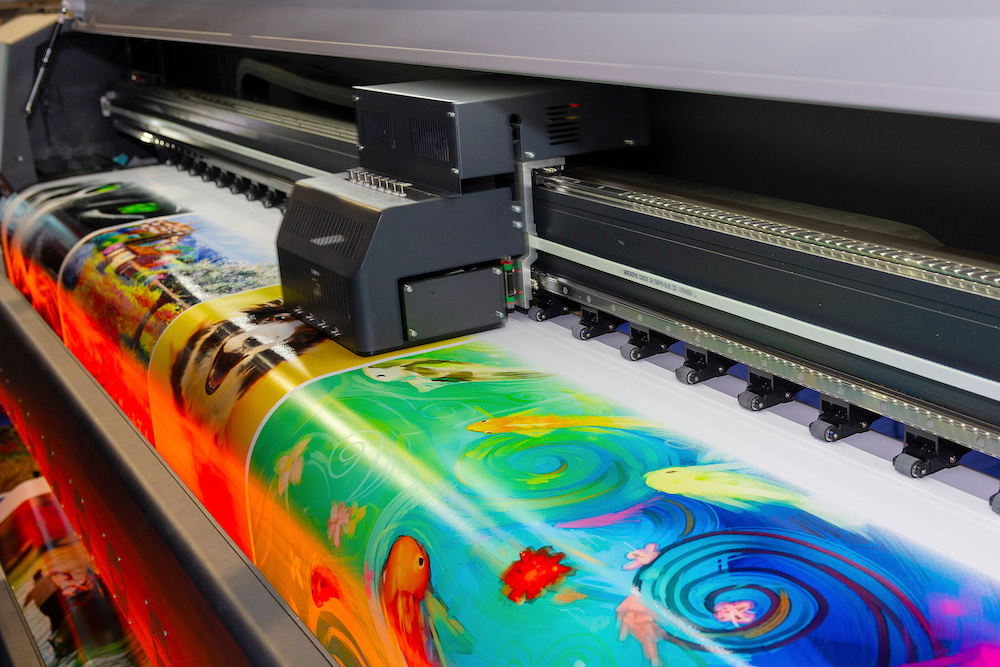Get This Report about Digital Printing
Get This Report about Digital Printing
Blog Article
Digital Printing - Questions
Table of ContentsDigital Printing for DummiesThe Facts About Digital Printing RevealedFacts About Digital Printing UncoveredGetting The Digital Printing To WorkThe Best Strategy To Use For Digital Printing9 Easy Facts About Digital Printing DescribedThe Ultimate Guide To Digital PrintingThe Digital Printing PDFs
Customization also allows organizations to stick out in a congested market by creating one-of-a-kind advertising and marketing materials that distinguish them from their rivals. One of the major advantages of digital printing is the ability to print variable data. Each published item can be special, permitting services to produce personalized advertising and marketing products that speak straight to their target audience.Digital printing also permits for customization in the layout of advertising and marketing materials (Digital Printing). With electronic printing, companies can produce designs that are special and customized to their particular needs.
The 10-Second Trick For Digital Printing
This advantages organizations that want to check various advertising methods or introduce brand-new product or services. By printing smaller amounts of marketing products, businesses can minimize waste and prevent the demand for excess supply. Digital printing is additionally versatile. It can print on various products, including paper, cardstock, plastic, and steel.
By using different materials and layouts, organizations can produce one-of-a-kind advertising products that stand apart from their competitors and bring in interest from their target audience. Digital printing additionally uses consistency. With standard printing methods, there is usually variant between prints as a result of differences in ink coverage, stress, and other elements.
This consistency can aid construct client trust fund and reputation, revealing that business is devoted to providing high-grade products. Consistency is particularly essential for organizations that desire to build consumer depend on and credibility. By guaranteeing that every print corresponds, organizations can show that they are committed to offering high-grade materials and taking note of the information.
The Definitive Guide for Digital Printing

Furthermore, electronic printing generates less waste due to the fact that it can publish as needed and in smaller sized amounts, lowering the need for excess supply and materials. Digital printing additionally makes use of much less power compared to typical printing methods. Digital printers do not need as much energy to operate, as they do not require to warm up as much or utilize as much power to run.
Rumored Buzz on Digital Printing

Balanced out printing needs a plate for each color printed. Conventional countered printing is a print approach that uses aluminum plates to move ink onto a rubber sheet (frequently referred to as a "blanket").
Digital Printing for Beginners
The tools's set up costs are high initially, added systems become reasonably much less costly as the amount boosts. Balanced out printing permits a large range of print materials to be used during manufacturing. It permits the printer to make use of different paper kinds, custom finishes, and numerous inks. The high-grade photos produced through offset printing make it the recommended approach, specifically amongst graphic designers, when looking for the best shade reproduction, information, and professional-looking prints.
The fundamental printing approach stays offset. For digital inkjet printing, ink is transferred straight onto the surface area. Instead of relying upon aluminum plates and rubber coverings to move a picture, electronic printing uses fluid ink throughout manufacturing. Typical home inkjet printers are one of the most usual digital printing techniques.
Some Known Details About Digital Printing
Since balanced out printing can blend customized color inks for each job, get redirected here it will naturally get the colors spot-on. Count on offset printing for tidy, unique types and images without touches or places.
It sets you back a great deal to begin a balanced out job. You have to invest money right into producing the plates, which requires time. When you've spent it, all of the products are all set to go, and you'll spend much less on big offset tasks than a digital print, which is about the same per item no issue exactly how big the task obtains.
Digital printing is much less costly for low-volume jobs. The rate per device drops for electronic printing, so at some factor, they crisscross. Changing information within a solitary print work.
Some Known Incorrect Statements About Digital Printing
While electronic printing or inkjet printing is the favored selection in address the existing times, there are engaging reasons to convert from balanced out to digital printing systems. When printing countered or electronically, important decisions and processes are involved in shade matching.
Whichever the case, the shade will require to be matched. Color matching of digital printer ink is no more testing with dyes and pigments. Industrial inkjet printing uses flexibility for printing on several substratums. Digital printing is ideal for consumers who do not call for longer runs and warehousing products.

One advantage of electronic printing is selecting from a large range of digital substratums. With countered printing, substrates comprise, typically, 30% of the expense of the job. With digital printing, the cost of the substrate in the total work is tiny. This permits for even more selections than in the past, and that benefits marketers and companies.
Digital Printing for Beginners
drop-on-demand is the second printing modern technology to think about. Continuous inkjet systems need significant upkeep, more operator training, and higher downtime. Tools expenses in inkjet printing are far reduced than countered printing as there are no plate-making, plates, and press costs. Past the capital expenditure, the prepress devices and printing presses need extremely experienced view publisher site drivers in offset printing, which adds labor prices.
Report this page